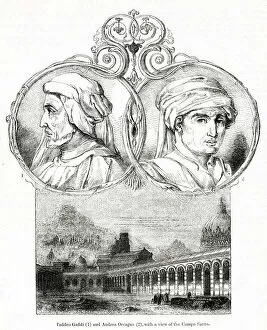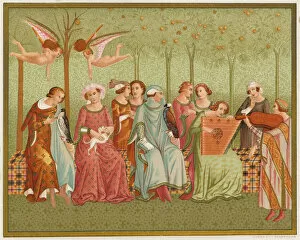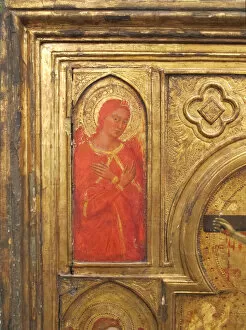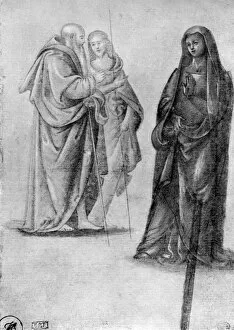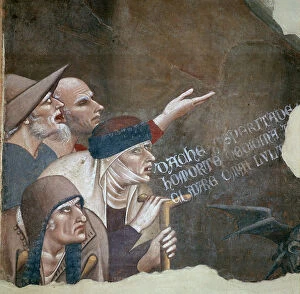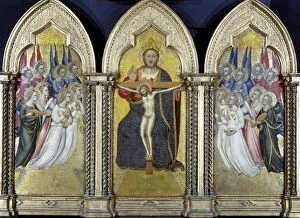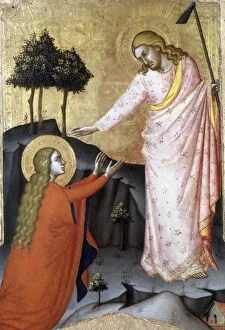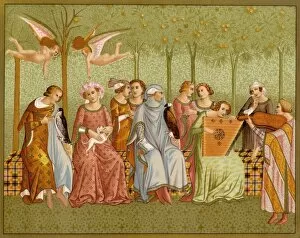Orcagna Collection
Andrea Orcagna, a renowned Italian artist of the 14th century, left an indelible mark on the world of art with his masterpieces
All Professionally Made to Order for Quick Shipping
Andrea Orcagna, a renowned Italian artist of the 14th century, left an indelible mark on the world of art with his masterpieces. One such masterpiece is the Marble tabernacle and frescoes found in The Chapel of the Corporale. This exquisite work showcases Orcagna's exceptional talent and attention to detail. In his famous painting "Enthroned Madonna and Infant Jesus, " created between 1343-68, Orcagna captures the divine beauty of mother and child. The delicate brushstrokes and vibrant colors bring this religious scene to life, evoking a sense of awe and reverence. Another notable artwork by Orcagna is "The Crucifixion" from around 1365. This powerful piece portrays Christ's sacrifice with raw emotion, leaving viewers captivated by its intensity. It also demonstrated his mastery in fresco painting through works like "Triumph of Death. " Created in 1348 during the devastating Black Death pandemic, this mural depicts death triumphing over humanity. Its haunting imagery serves as a reminder of our mortality. Collaborating with Taddeo Gaddi on Campo Santo in Pisa further showcased Orcagna's versatility as an artist. Together they adorned this sacred site with their artistic brilliance, creating an atmosphere that resonates even today. "The Dream of Life, " depicted in both chromolitho prints and murals within Triumph of Death series, offers a glimpse into medieval Italian society. Through intricate details depicting costumes from the 14th century, Orcagna transports us back in time to experience life as it once was. Among other notable works attributed to him are "Six Angels" painted around 1365 by Jacopo di Cione under Orcagna's influence. These celestial beings radiate ethereal beauty while showcasing their heavenly grace. Although much about Andrea Orcagna remains shrouded in mystery since he lived centuries ago, his legacy lives on through these remarkable artworks.






